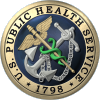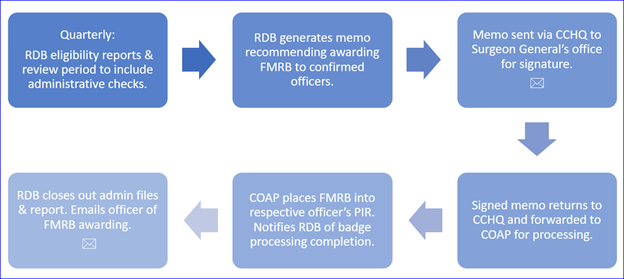-
- About ASB Main Page
- Deployment Travel and Travel Readiness
- Frequently Asked Questions
- Government Travel Charge Card
- Household Goods Officers
- Important Regulation Changes
- Junior COSTEP Travel Information
- Links
- Official Travel Forms
- Permanent Change of Station (PCS)
- Servicemembers Civil Relief Act (SCRA)
- Table of Frequently Used Acronyms
- Temporary Duty Assignments (TDY)
- Transportation
- Travel and Transportation
- Travel and Transportation Allowances FAQ
- Travel and Transportation Entitlements Summary
- Travel, PCS and Transportation
- Important Regulation Changes
- Travel & Transportation Entitlements Summary
- Permanent Change of Station (PCS)
- Temporary Duty (TDY)
- Junior COSTEP Travel Information
- Official Travel Forms
- Household Goods Officers
- Transportation
- Government Travel Charge Card
- Table of Frequently Used Acronyms
- Servicemembers Civil Relief Act
- Links
- Travel and Transportation Allowances FAQ
- Personnel & Career Management
- Licenses and Transcripts
- Licensure Overview and FAQs
- Transcripts FAQs
- Leave
- eCORPS Information
- Officer Leave and Absence Request FAQ
- Practice Hours
- Practice Hours FAQs
- Practice Hours User Guide
- Practice Hours Opportunities
- Long Term Training
- Extramural and Intramural Training FAQs
- Training Forms
- About Policy
- Commissioned Corps Issuance System
- Commissioned Corps Legislative Liaison Program (CCLLP)
- Equal Opportunity
- Frequently Asked Questions
- Political Restrictions
- Promotion Ceremony Protocol (PDF, 126kb)
- SGHG Drill and Ceremonies Manual (PDF, 3.39mb)
- Uniform Specifications
- PHS Hard Shoulder Boards and Sleeve Insignia (Male and Female) (PDF, 828kb)
- PHS Soft Shoulder Marks (Unisex) (PDF, 324kb)
- Physical Training Uniform (PTU)
- Promotion Preparation
- Checklist (Due Dates & Reminders)
- Precepts & Benchmarks
- Administrative Checks
- General Guidance
- Promotion Process
- Eligibility
- Opt Out/Promotion Deferral
- Zones
- Below the Zone
- Failure of Promotion
- Scoresheets
- Deployment Information
- Operations and Deployment
- On-Call Schedule
- Deployment Awards
- Other Resources
- About the Training Branch
- Training Dates
- Career Pathways
- Webinars
- Career Development Trainings
- Officer Basic Course (OBC)
- Officer Intermediate Course (OIC)
- Preparedness Trainings
- Military Facility Annual Training (MFAT)
- Partner Trainings
- Army War College (AWC)
- Interagency Institute for Federal Health Care Executes (IAI)
- Capstone Leadership, Education, Analysis, Development, Sustainment (LEADS)/Joint Medical Executive Skills Institute (JMESI) Course
- Command and General Staff Officer Course (CGSOC)
- Defense Advanced Research Project Agency (DARPA)
- Joint Medical Executive Skills Institute (JMESI) Intermediate Executive Skills (IES)
- Office of National Drug Control (ONDCP)
The USPHS Commissioned Corps is committed to our mission to protect, promote, and advance the health and safety of the nation. Public Health Service officers are trained and equipped to provide crucial public health leadership, assist with policy development, advance innovation and science, provide essential care services and respond to national and global public health emergencies. Through our Active Duty Regular Corps, our Public Health Response Strike Team (PHERST) and our Ready Reserve Corps, we remain responsive and available to rapidly deploy in the service of health.
-
Readiness and Deployment Branch (RDB)
Field Medical Readiness Badge (FMRB)
The FMRB is an optional badge officers may elect to pursue, enhancing their deployment-related knowledge and skill set. Review the steps below to increase familiarity with eligibility requirements and the administrative process to successfully be nominated for awarding of this badge.
Officers who believe they have met all the eligibility requirements as outlined below must complete a self-assessed review to ensure nothing is missing or needs updating prior to the next official CCHQ quarterly review peroid.
- ELIGIBILITY REQUIREMENTS
Ensure the following have fully been satisfied.
- Training Criteria: The list of required courses are outlined below. Clinical category officers must complete the additional 15 clinical courses. Most training courses are posted within Responder e-Learn portal, located on CCMIS website, under the “Login” drop-down menu. Training certificates must be downloaded individually and uploaded directly into eDOC-U, under “Readiness” and “Training” sections.
- Fitness Criteria: Officers must achieve a minimum of “Excellent” (75 points) or higher APFT performance level. The minimum fitness level must be both achieved and maintained throughout the FMRB review period and until the badge is awarded.
- Deployment Criteria: Officers must complete one or more CCHQ managed deployments consisting of a minimum of 7 days. Deployment days may be accumulated from one or more deployments. CCHQ maintains internal records of deployments and expands quarterly review to include officers who are identified as “Not Eligible” due to “No Deployments” within RDB Self Service.
- Time Requirement: The above criteria must be completed and maintained within a 3-year period at time of FMRB eligibility determination. If a training is outdated, it must be retaken, and training certificates re-uploaded to eDOC-U to replace the previously dated course(s).
- Administrative Requirements:Officers must maintain Basic Ready or “Qualified” readiness status and have no active or pending administrative or adverse actions for 2 years.
Training Criteria List of Required Courses:
- General Training (23 Courses)
Field Issues (10)
- 111 - NDMS in Review
- 112 - DMAT Roles and Responsibilities
- 113 - Veterinary Issues in Disasters
- 114 - Disaster Mortuary Operational Response Teams
- 120 - Personal and Family Preparedness
- 121 - Media Relations and the Role of the PIO
- 122 - Personal Gear
- 125 - Occupational Safety and the Disaster Response Worker
- 147 - Critical Incident Stress Management
- 181 - Hazardous Materials Awareness
Special Environments (9)
- 137 - Outreach Activities
- 144 - Mass Gathering Medicine
- 185 - NDMS Team Operations in Hostile Environments
- 187 - Refugee Health Care
- 210 - Cultural Awareness
- 211 - Civil Military Operations
- 212 - Health System Design
- 322 - Public and Environmental Health
- 324 - Basic Concepts in Epidemiology
International Responses (4)
- 213 - International Deployment
- 214 - Staying Healthy Overseas
- 215 - The Fog of Relief
- 216 - Working Effectively Overseas
- Clinical Training (15 Courses)
If your category and/or primary deployment role is clinical*, you must complete the following courses:
- 150 - Airway Management
- 151 - Abdominal Trauma
- 152 - Thoracic Trauma
- 153 - Spinal Injuries
- 154 - Head Injuries
- 155 - Blast Injuries
- 156 - Heat Exposure Injuries
- 157 - Cold Exposure and Hypothermia
- 158 - Burn Injuries
- 159 - Crush Injuries
- 160 - Pediatric Care/Triage
- 161 – Field Dentistry
- 162 – OB-GYN Issues in Disasters
- 163 – Orthopedic Injuries and Stabilization during Disasters
- 164 - Eye Care Following Disasters
-
*Clinical Category and/or Primary Deployment Roles (includes but not limited to the following officers):
- Physician / Physician Assistant
- Dentist / Dental Hygienist
- Nurse / Nurse Practitioner
- Pharmacist
- Dietitian
- Veterinarian
- Therapist
- Mental Health (clinical social worker, psychologist, psychiatrist, etc.)
- Medical Technologist
- Optometrist
- FEMA Incident Command System Training (4 Courses):
Note: Officers working towards obtaining the FMRB are required to stay current with FEMA Incident Command System (ICS) content updates. Therefore, if your FEMA certificates are older than the dates indicated below, please retake the course(s) and submit the new Certificate(s) of Completion into eDOC-U.
- IS-100.C: Introduction to Incident Command System (Updated 6/25/2018)
- IS-200.C: Basic Incident Command System for Initial Response (Updated 3/11/2019)
- IS-700.B: An Introduction to the National Incident Management System (NIMS) (Updated 6/25/2018)
- IS-800.D: National Response Framework (NRF), An Introduction (Updated 5/6/2020)
- ADMINISTRATIVE PROCESS
FMRB Eligibility Reports: these are generated quarterly (JAN, APR, JULY, OCT) and the review process continues for the duration of the quarter.
FMRB Review: readiness history and administrative checks are performed manually. Officers who are confirmed FMRB eligible will be included on a recommendation memo, submitted to the Surgeon General’s office for signature.
FMRB Awarding: The administrative process may span 6+ months from when eligibility reports are generated to when FMRB recommendation memos are signed/returned to CCHQ. Commissioned Officer Awards Program (COAP) individually adds the FMRB into an officer’s respective Promotion Information Report (PIR), and RDB’s readiness team directly notifies officers of this final step.
FMRB Process Flow Chart:
Additional Resources for Officers:
- Frequently Asked Questions (FAQs)
- CCLMS FMRB Webinar (PENDING Renewal)
Last Updated: 3/31/23
USER ASSISTANCE
Please check our Frequently Asked Questions (FAQs) . FAQs are located at the top of the page next to the search function.
Having Access Issues or Need IT Help? Please contact the Commissioned Corps Helpdesk at: CCHelpDesk@hhs.gov
COMMISSIONED CORPS NEWS
Officer Spotlight September 2025
Officer Spotlight
Practice Hours Opportunities
Practice Hours Opportunities
2023 Temporary Grade Promotions
CC News Announcement 2023 Temporary Grade Promotions
Changes in Tattoo Policy in CCI 412.01, Uniforms and Appearance
Changes in Tattoo Policy in CCI 412.01, Uniforms and Appearance
Surgeon General Priorities
Surgeon General Priorities
January 2021: United States Public Health Commissioned Corps Doctrine
The link above will take you to the Noncompetitive Promotion Roster for Promotion Year 2020.
FAQs Practice Hours and Special Pay Changes
This is first in a series of FAQs, more FAQs will be forthcoming on Practice Hours and Special Pays.
Coronavirus Disease 2019 (COVID-19) Mission - Deployments Readiness Updates
As we position ourselves to assist with controlling the spread of the Coronavirus Disease 2019 (COVID-19), please note that we’re in an “all-hands on deck” status. Messaging has gone out from the Assistant Secretary for Health reminding Commissioned Corps officers of their deployment responsibilities...
Protecting, Promoting and Advancing the Health and Safety of Our Nation. Commissioned Corps Headquarters
1101 Wootton Parkway, Suite 300
Rockville, MD. 20852
240-453-6000-
COMMISSIONED CORPS- Home
- Contact Us
- About Us
- Site Map
-
U.S. DEPARTMENT OF
HEALTH AND HUMAN SERVICES- HHS Home
- Office of Assistant Secretary for Health
- Office of the Surgeon General
- USPHS.gov
-
U.S. GOVERNMENT- The White House
- USA.gov
- USAJOBS.gov
- DATA.gov
-
ADDITIONAL INFORMATION- Plain Writing Act
- Accessibility
- Privacy Notice
- Freedom of Information Act
- Disclaimers
- Vulnerability Disclosure Policy
- ELIGIBILITY REQUIREMENTS

-
COMMISSIONED CORPS OF THE
U.S. PUBLIC HEALTH SERVICE® - CCMIS
